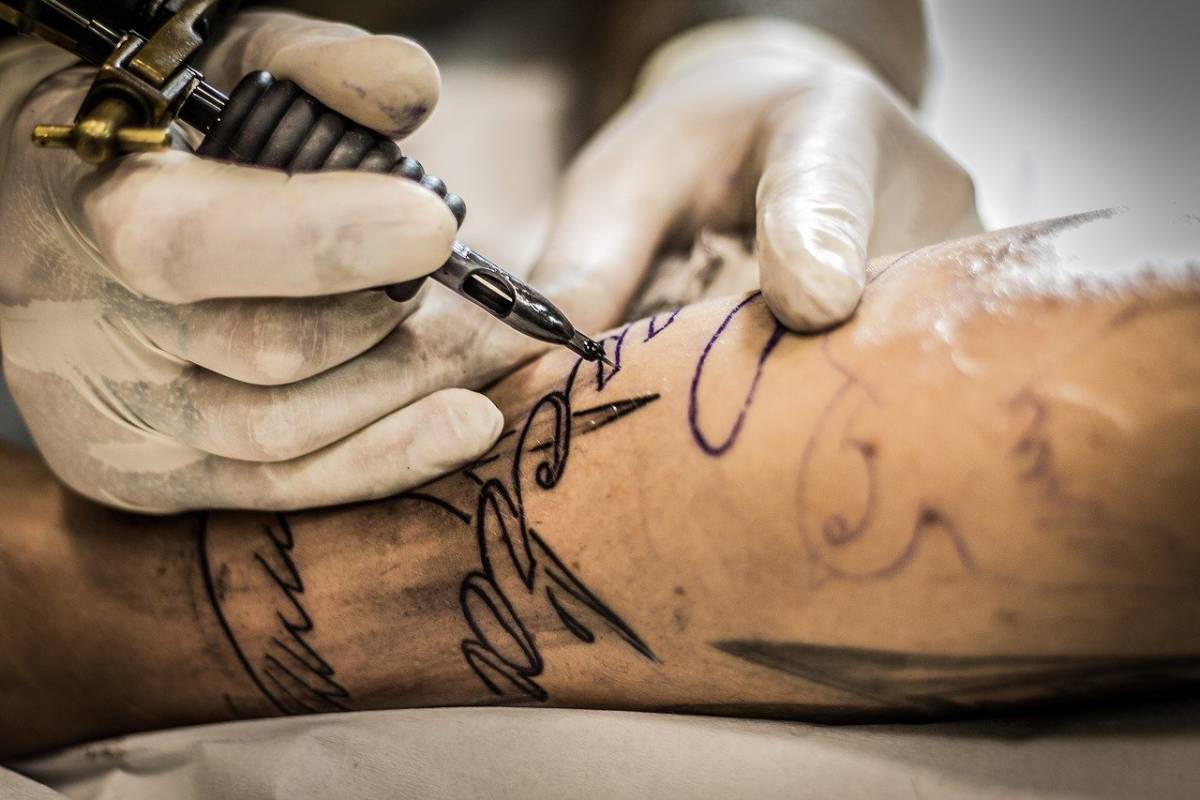Choosing a reputable tattoo artist is only the first step to having a tattoo to be proud of.
That is why at SONS ART & TATTOO, we work with qualified professionals who have followed and passed a selection process, complying with all applicable regulations and following strict protocols so that your tattoo is done correctly throughout its operation.
How to take care of your tattoo while it is healing is just as important, or more. The best tattoo can crumble if you don’t take proper care of it.
The tips vary from artist to artist, but here is an overview of what you need to do to keep your tattoo clean, sharp, and vibrantly colored.
Table of Contents
Cleaning And Initial Care Of Your Tattoo
1. Listen to your tattoo artist.
At SONS ART & TATTOO, our tattooists will provide you with detailed instructions to care for your new tattoo, which you must follow carefully. Each tattoo artist will have a slightly different opinion of how best to care for a new tattoo, but don’t worry, the most reputable artists have years of experience caring for new tattoos, so their methods have been tried and tested.
- Think of it as if your tattoo has a guarantee: if you don’t follow the artist’s instructions, you can void the guarantee, and he or she will not do touch-ups for free.
- Remember: tattooists want your tattoo to heal perfectly and look just as great or better than you do so that they won’t give you any bad advice.
- Each person has a different dermis and epidermis, so no fixed rule works 100% for everyone.
- The following instructions may vary slightly from what your tattoo artist tells you, but they can serve as a good guideline.
2. Leave the bandage for 2 to 12 hours.
Once your tattoo finishes, our tattooists will clean the area where the tattoo has made, apply an antibacterial ointment, and cover it with a bandage or dressing.
Once you leave our SONS ART & TATTOO studio, try to resist the urge to open the bandage to take a look or show your new [tattoo] to friends or family.
The bandage protects the [tattoo] from bacteria that can penetrate the tattooed skin, leaving a minimum of 2 hours before removing it.
- A thick, absorbent, and non-stick dressing is the bandage most used by [tattoo] artists.
They are very effective as they allow the [tattoo] to breathe while being thick enough to protect the skin from bacteria and bumps.
They are also highly absorbent, allowing them to leave for up to 12/24 hours before needing to be remove.
- Many [tattoo] artists believe that it is best to wrap the [tattoo] in plastic wrap. Those who bet on plastic wrap believe that it is the best way to cover a new [tattoo] since it is easy to apply and remove without sticking to the skin.
It also forms a protective shield that protects the [tattoo] from bacteria.
(The time of year must be income into account, since the higher the ambient temperature, the less time the film can be port on, in order NOT to create an environment conducive to the creation of bacteria – high humidity and temperature).
- Whatever your tattoo artist uses to cover the tattoo, be sure to follow his advice carefully. Both types of bandages have used successfully before.
- Remember that you have to change the plastic wrap more frequently than any other bandage to avoid bacteria reproduction.
3. Remove the bandage carefully.
How long the bandage has to be left in until it remove is still debate. Many tattoo artists agree that a tattoo should keep covered for a minimum of 2 hours before removing it, but the maximum recommended time before releasing it varies between 4 and 12/24 hours. Plastic-covered [tattoos] are the exception; Plastic wrap should not be left on a new [tattoo] for more than 12 hours.
- The amount of time will vary depending on the [tattoo’s] size and location, the level of leakage from the [tattoo], and the type of bandage used. In most cases, it is best to follow your tattoo artist’s advice, but you should also follow your judgment and common sense.
- To remove the bandage, soak it in warm water to prevent it from sticking to the skin. It should be easily remove once wet. Discard the used application.
4. Wash the tattoo carefully.
Most [tattoo] artists recommend warm water and unscented antibacterial or antimicrobial soap. Use your hands to carefully rub the [tattoo] (after cleaning them with the same type of soap), removing traces of blood, plasma, or ink. It will help prevent the [tattoo] from scabbing over too soon. Do not use a towel, loofah, or any other type of sponge to clean the [tattoo], as they can harbor bacteria.
- Do not put the [tattoo] directly underwater. Indirectly wash it by splashing it with water with your hands. The stream of water straight from the tap can be very annoying on a new [tattoo].
- If your new [tattoo] covers a large area of skin, it may be easier to wash it off in the shower.
5. Let the tattoo air dry.
Once you have washed the [tattoo] well, you have to dry it with a paper napkin with small dabs. Do not rub the [tattoo] as it can irritate. Once you have removed excess moisture, you will need to leave the [tattoo] uncovered for 20 to 60 minutes. It will allow the [tattoo] to breathe and the excess water to evaporate.
- It would help if you allowed your [tattoo] to breathe even after washing or getting wet.

